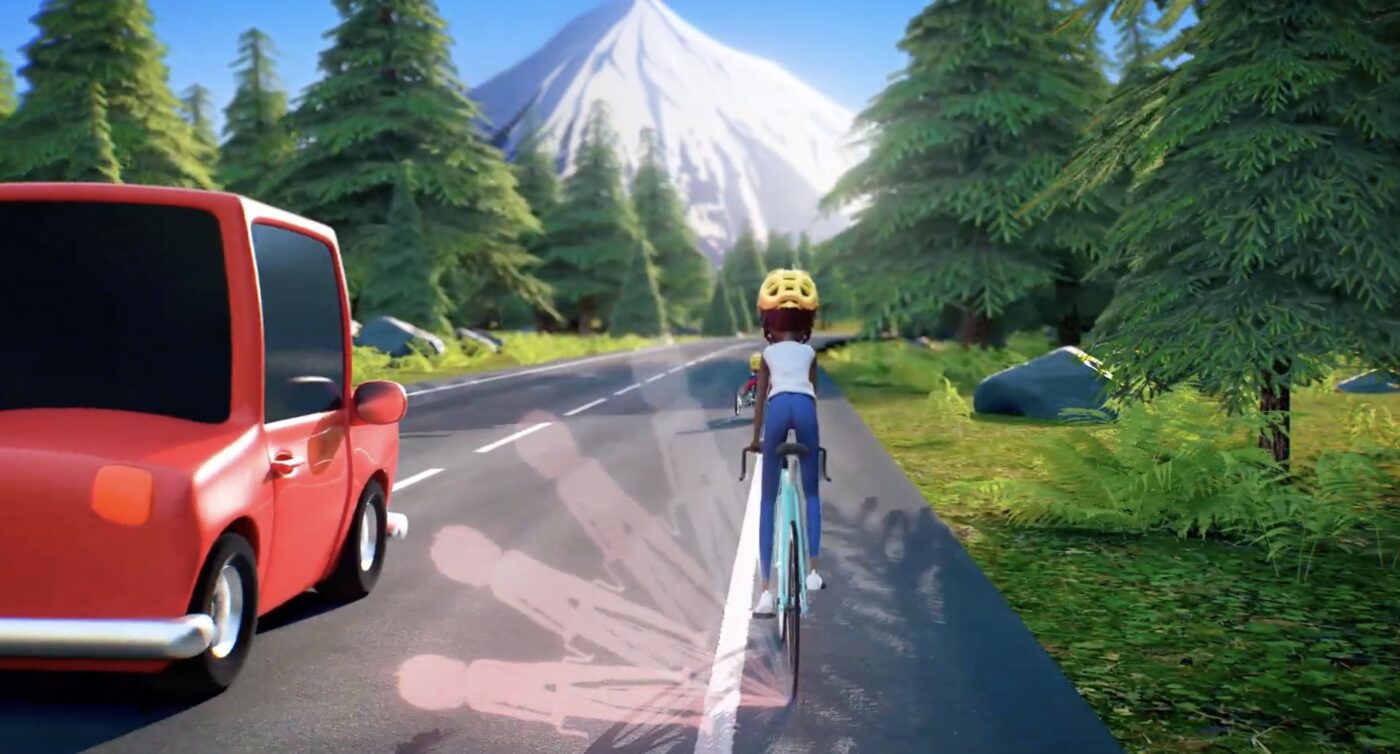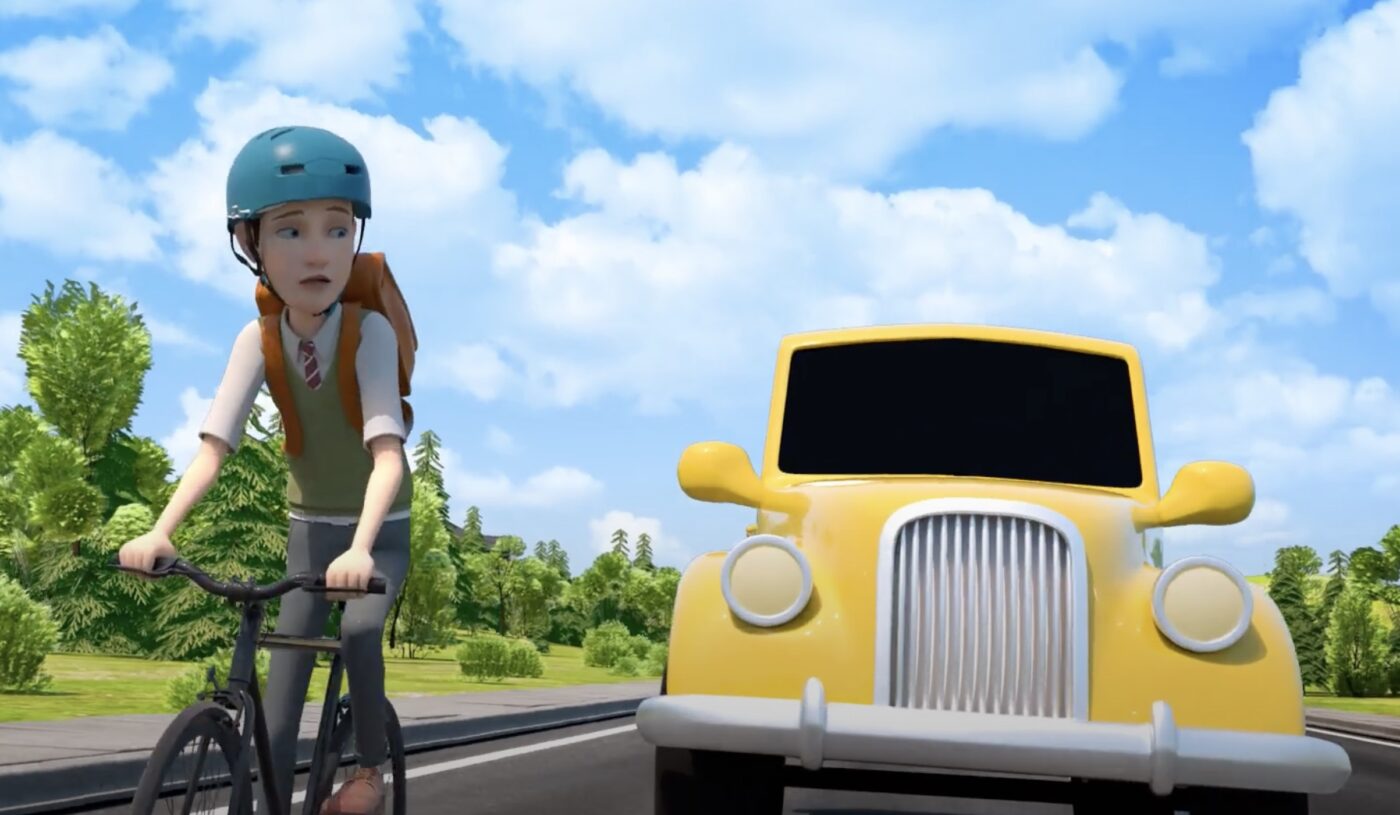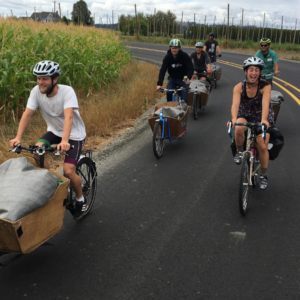

Just in time for peak travel season, the Oregon Department of Transportation has released a new public service announcement (PSA) video to educate drivers on how to safely pass a bike rider.
The 30-second animated video was created and released by ODOT’s Traffic Safety Office.
Here’s the text of the narration, followed by my thoughts on the video below the jump:
“You know how your sideview mirror says ‘objects are closer than they appear’? Well, when you’re on a bicycle, passing vehicles can feel even closer. So when you’re passing someone on a bike, keep in mind the size of your vehicle. Remember to slow down and leave extra space. We call it ‘fall distance.’ It’s the room riders need in case they should fall. Also, people in bicycles can take the whole lane if they need to. So you’ll need to hold back patiently until it’s safe to pass. Because here in Oregon, we all want to get there safely.”
Oregon’s Bicycle Passing Law
- ORS 811.065: Unsafe passing of person operating bicycle
- BikePortland safe passing law story archive
As far as government PSAs go, it actually looks pretty cool and does a good job laying out the issues around safe passing. One thing that bothered me was how the cars and trucks in the video had blacked-out tint on the windows. I realize that was probably an aesthetic choice by the animators, but it reinforces a really bad — and illegal! — behavior that is unfortunately all too common. It’s odd that they would show solidly tinted windows, especially in a video about passing, where seeing the person inside the car is often an important part of doing it safely.
The other part of this video that stood out to me was the explanation of “fall distance.” I think they did a great job of this both visually and in the narration. I don’t recall hearing that “fall distance” phrase before, but it’s a catchy and helpful way to educate people about our unique safe passing law (unlike most states, we don’t have a specific distance).
And it’s too bad that they couldn’t have waited a bit to incorporate something about the big revision to Oregon’s safe passing law that just passed this week. One reason Senate Bill 895 was created was to help clear up confusion in the public about what drivers are able to do in “no passing” zones on rural roads. A video like this would have been the perfect place to demonstrate that scenario and kickstart public education around it.
Hopefully this gets played a lot at DMVs on local TV newscasts, and so on.
Watch the video below and let us know what you think.






Thanks for reading.
BikePortland has served this community with independent community journalism since 2005. We rely on subscriptions from readers like you to survive. Your financial support is vital in keeping this valuable resource alive and well.
Please subscribe today to strengthen and expand our work.
“Fall distance” is such a flawed concept. People don’t understand it, wouldn’t be able to estimate it if they did, and anyway people don’t fall along their line of travel when they fall off of a bike. I wish they’d taken the opportunity, while amending the passing law, to convert it to a flat 5’.
Do you think people can clearly guess what 5 feet is, or drivers will know/remember that detail?
I think the concept of fall distance gives a clear reason for people to give significant space when passing. Which is helpful. Imagine the person falling gives the driver a reason to give them space.
For me, the reason is more “6,000 pounds going closely past me at 55 mph has a really scary/psychological/physical impact on my balance”… so I might wonder if there’s some easy story to get that experience in people’s brain (like the bus drivers testing what it’s like to be on a bike when a bus passes closely).
Totally agree. Five foot minimum
One issue with a distance is that police officers will never ever ticket for it because they don’t want to be “estimating” what 3 feet is. Fall distance is pretty easy to prove in court however if you are hit by someone, basically there is no way that contact can be made between the person riding a bike and a motor vehicle someone is using to pass them if the person leaves the required distance.
Pretty cutise cars compared to the lifted over puffed trucks that have passed me and coal rolled.
Also I only wish that shoulders in remote areas were as wide as shown in the video.